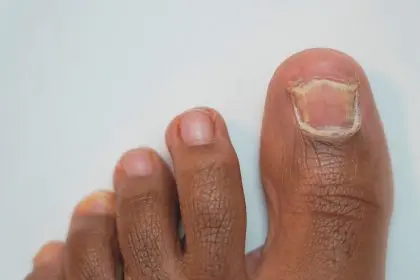Toothache represents one of the most intense and debilitating forms of pain many people ever experience. That throbbing, persistent discomfort can disrupt sleep, concentration, eating, and virtually every aspect of daily life. While seeing a dentist remains the only proper solution for addressing the underlying cause, several natural home remedies can provide meaningful temporary relief while you await your dental appointment.
Understanding what causes tooth pain
Before exploring relief methods, understanding the common causes of toothache helps explain why certain remedies prove effective. Tooth pain typically stems from inflammation of the dental pulp – the innermost portion of the tooth containing nerves and blood vessels. This inflammation often results from bacterial infection, trauma, or decay that exposes these sensitive tissues.
Several distinct conditions commonly trigger toothache. Dental decay or cavities create openings in the tooth’s protective enamel and dentin layers, allowing bacteria and irritants to reach the sensitive pulp. Gum disease inflames the tissues surrounding teeth, causing pressure and pain. Damaged fillings or dental work can expose previously protected areas to irritation. Cracked or fractured teeth may expose the inner pulp to bacteria and temperature changes. Impacted wisdom teeth create pressure as they attempt to emerge through insufficient space.
The pain itself varies widely between individuals and conditions. Some experience constant, dull aching, while others endure sharp, shooting pain triggered by temperature, pressure, or sweet foods. The intensity may fluctuate throughout the day, often worsening at night when lying down increases blood flow to the head. Associated symptoms frequently include facial swelling, headache, fever, and bad taste from infection.
Understanding your specific symptoms helps identify the most effective temporary relief measures while you arrange proper dental care. Remember that all home remedies address only symptoms, not underlying causes, making professional treatment essential for resolution.
Salt water rinse: The first-line defense
A warm salt water rinse represents one of the simplest yet most effective first responses to tooth pain. This solution works through multiple mechanisms: reducing inflammation, drawing out infection-causing fluids through osmosis, neutralizing acids produced by bacteria, and dislodging trapped food particles that may exacerbate pain.
Creating an effective salt water solution requires proper proportions. Dissolve one-half teaspoon of table salt in eight ounces of warm (not hot) water, stirring until completely dissolved. The water should feel comfortably warm, not hot enough to cause additional pain on contact with sensitive areas.
For maximum effectiveness, take a generous mouthful of the solution and gently swish it around the affected area for 30 seconds before carefully spitting it out. Repeat this process every two to three hours throughout the day. The relief effect often builds with consistent application rather than providing immediate complete relief.
This remedy proves particularly effective for pain associated with gum inflammation, food trapped between teeth, or minor infections. Its simplicity, safety, and availability make it an ideal first response to emerging tooth pain while arranging dental care.
Cold compress: Reducing inflammation naturally
Applying cold to the external area of pain effectively reduces inflammation, numbs nerve endings, and constricts blood vessels that contribute to painful pressure. This approach works particularly well for pain resulting from trauma, such as a blow to the face, or for swelling related to infection.
To create an effective cold compress, wrap ice cubes or a frozen gel pack in a thin towel or cloth – never apply ice directly to skin, as this can cause tissue damage. Apply the compress to the cheek over the painful area for 15-20 minutes at a time, then remove for at least 20 minutes before reapplying if needed.
For maximal benefit, elevate your head while using the cold compress, further reducing blood flow to the affected area. The cooling effect penetrates tissues gradually, so allow sufficient application time for the cold to reach deeper structures where inflammation occurs.
This remedy works best for pain accompanied by visible external swelling or following dental procedures. If pain stems primarily from internal issues like cavities, other approaches may provide more direct relief.
Clove oil: Nature’s dental anesthetic
Clove oil contains eugenol, a natural compound with proven anesthetic and anti-inflammatory properties. Research demonstrates that eugenol effectively numbs nerve endings and reduces inflammation in dental tissues, explaining its long history in traditional dental care worldwide and its continued use in professional dental products today.
For safe application, dilute pure clove oil properly to prevent tissue irritation. Mix 2-3 drops of clove oil with one-half teaspoon of olive oil or coconut oil as a carrier. Using a clean cotton ball or cotton swab, apply a small amount of this diluted solution directly to the painful tooth and surrounding gum tissue. Reapply up to three times daily as needed.
Alternatively, place a whole clove briefly in your mouth to soften, then position it directly against the painful tooth, gently biting down to release its oils. Hold it in place for 20-30 minutes as the numbing effect develops. This method proves particularly useful when clove oil isn’t available.
While generally safe for temporary use, avoid clove oil during pregnancy, in young children, or if taking blood-thinning medications due to potential interactions. Some individuals may experience mild irritation even with diluted application, so discontinue use if discomfort increases.
Peppermint tea: Soothing and numbing relief
Peppermint contains menthol, a natural compound that provides both mild numbing effects and pleasant cooling sensations when applied to sensitive tissues. Peppermint tea bags offer a convenient delivery method for these beneficial properties directly to painful dental areas.
For hot application, steep a peppermint tea bag in hot water for 3-5 minutes, then remove and allow it to cool until warm but comfortable to touch. Apply the warm, moist tea bag directly to the affected area, gently biting down to release more of the beneficial compounds. The combination of warmth and menthol helps soothe inflammation while temporarily numbing pain receptors.
For cold application, particularly effective for throbbing pain, refrigerate a pre-moistened peppermint tea bag for 15-20 minutes before applying it to the painful area. The cooling effect enhances the natural numbing properties of menthol for dual-action relief.
This remedy works especially well for generalized tooth sensitivity or pain that extends beyond a single tooth to the surrounding gum area. Its pleasant taste and aroma offer psychological comfort along with physical relief, making it particularly suitable for children and those sensitive to stronger remedies.
Garlic: Ancient antibacterial remedy
Garlic contains powerful compounds, particularly allicin, with documented antibacterial and anti-inflammatory properties. These natural chemicals can help reduce bacterial populations contributing to dental infections while simultaneously fighting inflammation at the pain source.
The simplest application method involves crushing a fresh garlic clove to release its beneficial compounds, then mixing it with a pinch of salt for additional anti-inflammatory effect. Apply this paste directly to the affected tooth, avoiding contact with other mouth tissues when possible. Allow it to remain in place for 10-15 minutes before thoroughly rinsing.
For those sensitive to garlic’s intensity, creating a more moderate garlic mouthwash offers an alternative approach. Crush several garlic cloves into warm water, let the mixture sit for 10-15 minutes to infuse, then strain out the solids. Use this liquid as a mouth rinse several times daily, being careful not to swallow.
While effective, garlic’s strong taste and odor make this remedy challenging for some users. The potential for tissue irritation with direct application also requires caution. Consider using this approach when infection symptoms accompany tooth pain, particularly with swelling or fever.
Ginger-cayenne paste: Powerful pain-fighting combination
A paste combining ginger and cayenne creates a potent natural pain reliever through the action of two plant compounds: gingerol in ginger and capsaicin in cayenne. Both substances influence pain receptors and reduce inflammation through different but complementary mechanisms.
To create this remedy, mix equal parts fresh grated ginger root and cayenne powder with enough water to form a thick paste. Using a cotton ball, apply a small amount directly to the affected tooth and surrounding gum, avoiding contact with the tongue and other sensitive mouth tissues. When the paste contacts the painful area, an initial burning sensation typically occurs before the numbing effect develops, usually within 1-2 minutes.
For those sensitive to cayenne’s intensity, increasing the ginger proportion provides a milder alternative that still offers significant benefit. Adding a drop of olive oil to the paste can also moderate its strength while maintaining effectiveness.
This remedy works particularly well for deep, throbbing tooth pain but requires careful application to prevent irritating healthy tissues. The powerful compounds can temporarily overwhelm pain signals to the brain, providing significant relief while awaiting professional care.
Thyme: Essential oil with therapeutic benefits
Thyme essential oil contains thymol, a powerful antiseptic compound with documented effectiveness against oral bacteria. This natural chemical helps fight infection while providing mild anesthetic effects that reduce pain perception.
For safe use, proper dilution is essential. Mix 1-2 drops of thyme essential oil with one teaspoon of carrier oil such as olive oil or coconut oil. Apply this diluted solution to the painful area using a cotton ball, focusing on the affected tooth and immediate surrounding tissue. Alternatively, add a few drops of thyme oil to a small amount of water and use as a targeted mouth rinse, being careful not to swallow.
This remedy proves particularly effective for pain associated with bacterial infection, offering dual benefits of symptom relief and addressing a common underlying cause. The pleasant herbal aroma also provides psychological comfort during painful episodes.
As with any essential oil, caution prevents adverse effects. Always use therapeutic-grade oils, maintain proper dilution ratios, and discontinue use if irritation occurs. Avoid use in young children, during pregnancy, or if taking medications without professional guidance.
Acupressure: Targeted pain relief through pressure points
Acupressure utilizes specific body points connected to pain pathways, potentially interrupting pain signals and stimulating natural pain-relieving endorphins. Several points specifically relate to dental discomfort, offering non-invasive relief options.
The hand point technique involves applying firm pressure to the area where the base of your thumb and index finger meet (the LI4 pressure point). Using the thumb and index finger of your opposite hand, press firmly on this point for 2-3 minutes, release briefly, then repeat as needed. This point connects to facial pain pathways in traditional medicine systems.
Facial pressure points include the area directly below the second molar on the cheekbone and the philtrum – the groove between the nose and upper lip. Applying gentle but firm pressure to these points for 1-2 minutes may help reduce tooth pain intensity temporarily.
While these techniques cause no direct changes to dental conditions, they can meaningfully reduce pain perception during acute episodes. Their advantage lies in immediate availability without special supplies and absence of side effects when performed correctly.
When to seek immediate dental care
While home remedies can provide valuable temporary relief, certain symptoms indicate urgent professional attention is required:
Severe, unrelenting pain that prevents sleep or normal activities signals potentially serious infection requiring prompt intervention. Facial swelling, especially if extending toward the eye or affecting the ability to fully open the mouth, indicates spreading infection that can become life-threatening without treatment. Fever accompanying tooth pain suggests systemic infection requiring antibiotics and professional care. Trauma resulting in loose or displaced teeth requires immediate attention to preserve the teeth and prevent complications.
Any bleeding around teeth or gums that doesn’t stop with gentle pressure warrants same-day evaluation. Pain following recent dental work could indicate complications requiring adjustment by the providing dentist. Difficulty swallowing or breathing associated with dental pain constitutes a medical emergency requiring immediate care.
While arranging urgent care, continue appropriate home measures to manage symptoms, but recognize these as temporary bridges to proper treatment rather than substitutes for professional intervention.
Prevention strategies for future dental health
Beyond addressing current pain, implementing preventive measures helps avoid future dental emergencies:
Establish consistent oral hygiene practices including brushing twice daily with fluoride toothpaste, daily flossing between all teeth, and regular use of antimicrobial mouthwash. These basic habits remove the bacterial plaque that causes most dental problems before it can create decay or gum disease.
Regular dental check-ups every six months allow early detection of developing issues before they cause pain or require extensive treatment. Professional cleanings remove hardened deposits that home care cannot effectively address.
Dietary choices significantly impact dental health. Reducing consumption of sugary foods and beverages limits the fuel that oral bacteria use to produce damaging acids. Similarly, minimizing acidic drinks helps preserve protective enamel. Incorporating tooth-friendly foods like crunchy vegetables, which stimulate saliva production and naturally clean teeth surfaces, supports overall oral health.
Protective measures for those with known dental vulnerabilities include using mouthguards during contact sports or for nighttime grinding, avoiding chewing ice or other hard substances that can fracture teeth, and addressing grinding or clenching habits through dental appliances or stress management techniques.
By combining these preventive approaches with prompt attention to minor symptoms before they escalate to painful emergencies, you can significantly reduce the likelihood of future severe toothaches while maintaining better overall oral health.












